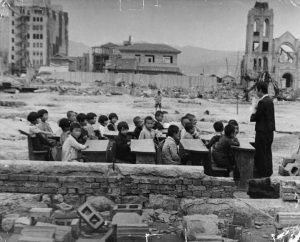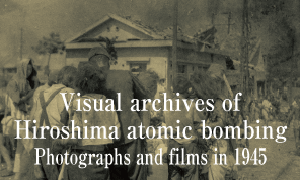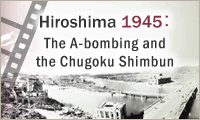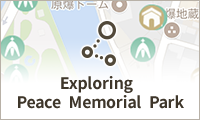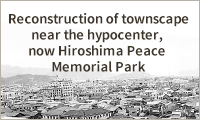Documenting Hiroshima of 1946: May, students study in open-air classes at burned-out site of school
May 21, 2025
by Maho Yamamoto, Staff writer
In May 1946, students at Noborimachi National School (now Noborimachi Elementary School in Hiroshima’s present-day Naka Ward) were studying in open-air classes. As restoration work had begun on the facility the school had been renting after the atomic bombing, the school was forced to move back to its own burned-out site, about 1.1 kilometers from the hypocenter.
Stephen Kelen, a reporter with the British Commonwealth Occupation Forces, took photos of the situation at the time. About 20 second-year students, without textbooks or notebooks, faced their teacher amid scattered debris.
Kengo Kurata, now 86, and a resident of Naka Ward, is looking directly at a camera from the center of the third row. He said, “All we had was coal and tangerine boxes that had been brought in to serve as desks, within the frame of the school building’s foundation.” He recalls that, with no walls or ceilings for shelter, the school was at the mercy of the weather.
The wooden two-story school building was completely destroyed in the fire. The Hiroshima Central Broadcasting building (now NHK Hiroshima Station), which was within the school district and survived the bombing, served as a temporary classroom, and classes resumed in October. However, as restoration work began, classes moved to the Hiroshima Central Telephone Office in Fukuro-machi (now part of Naka Ward) early in the New Year. This location also became unusable for the same reason.
Lessons continued in open-air classes, and construction of a simple school building began nearby. In July, ten one-story classrooms were completed. As more students returned home and moved in from other cities, classrooms were always in short supply, and classes were divided into two shifts, morning and afternoon. The schoolyard was turned into a sweet potato field to help prevent a food shortage.
Mr. Kurata was in Akitsu-cho (now part of Higashihiroshima) with his relatives, escaping the effects of the A-bombing, but he lost two of his eight siblings. In March 1946, his family built a shack at the site of their former home in Hashimoto-cho (now part of Naka Ward) and returned. His parents reopened a hardware store to make a living. He recalled that only in 1949, when the school building was built at its present site, was he finally able to play freely again.
(Originally published on May 21, 2025)
In May 1946, students at Noborimachi National School (now Noborimachi Elementary School in Hiroshima’s present-day Naka Ward) were studying in open-air classes. As restoration work had begun on the facility the school had been renting after the atomic bombing, the school was forced to move back to its own burned-out site, about 1.1 kilometers from the hypocenter.
Stephen Kelen, a reporter with the British Commonwealth Occupation Forces, took photos of the situation at the time. About 20 second-year students, without textbooks or notebooks, faced their teacher amid scattered debris.
Kengo Kurata, now 86, and a resident of Naka Ward, is looking directly at a camera from the center of the third row. He said, “All we had was coal and tangerine boxes that had been brought in to serve as desks, within the frame of the school building’s foundation.” He recalls that, with no walls or ceilings for shelter, the school was at the mercy of the weather.
The wooden two-story school building was completely destroyed in the fire. The Hiroshima Central Broadcasting building (now NHK Hiroshima Station), which was within the school district and survived the bombing, served as a temporary classroom, and classes resumed in October. However, as restoration work began, classes moved to the Hiroshima Central Telephone Office in Fukuro-machi (now part of Naka Ward) early in the New Year. This location also became unusable for the same reason.
Lessons continued in open-air classes, and construction of a simple school building began nearby. In July, ten one-story classrooms were completed. As more students returned home and moved in from other cities, classrooms were always in short supply, and classes were divided into two shifts, morning and afternoon. The schoolyard was turned into a sweet potato field to help prevent a food shortage.
Mr. Kurata was in Akitsu-cho (now part of Higashihiroshima) with his relatives, escaping the effects of the A-bombing, but he lost two of his eight siblings. In March 1946, his family built a shack at the site of their former home in Hashimoto-cho (now part of Naka Ward) and returned. His parents reopened a hardware store to make a living. He recalled that only in 1949, when the school building was built at its present site, was he finally able to play freely again.
(Originally published on May 21, 2025)

